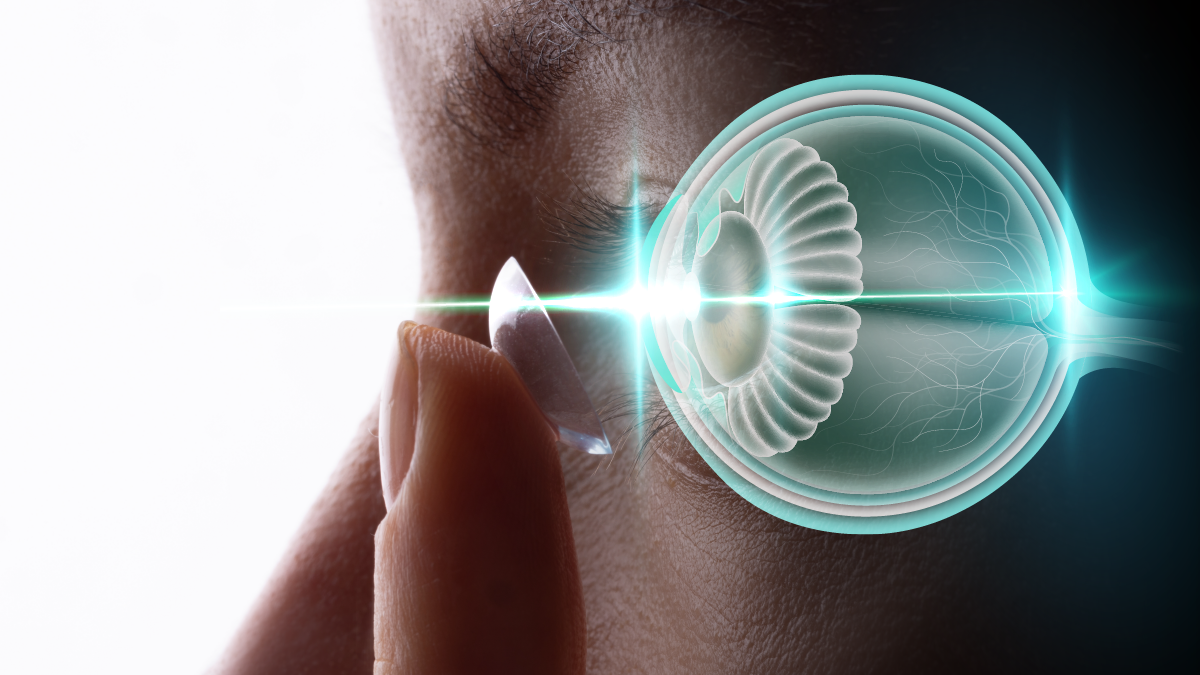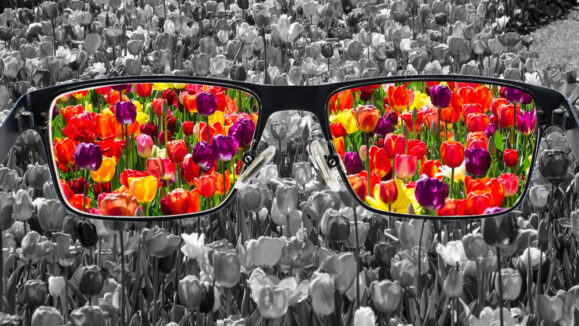We can’t stop teen myopia, but these RGPs just might slow it down.
Multifocal rigid gas permeable contact lenses (MF-RGPCL), a form of contact lenses for myopia control in adolescents, may be a useful option for slowing the progression of myopia in adolescents, according to a new study published in Scientific Reports. Over a 12-month period, these lenses were found to reduce the rate of eye elongation—a key marker of myopia progression—by nearly half compared to standard single-vision glasses.1
Dr. Michael Chiang explains how multifocal contact lenses slow myopia progression.
MF-RGPCL vs. Single-Vision Glasses in Myopia Control
The study followed 69 participants, measuring axial elongation to assess myopia progression: 48 wore MF-RGPCL and 21 wore single-vision spectacle lenses (SVL). The two groups had similar baseline characteristics, with average ages of 12.3 and 13.4 years, respectively.1
After one year, the MF-RGPCL group showed an average axial eye elongation of 0.18 mm, while the SVL group had an average increase of 0.33 mm. Notably, 42% of the MF-RGPCL group experienced very little eye growth (less than 0.1 mm), whereas 65% of the SVL group had more significant elongation (over 0.3 mm).1
These results point to a meaningful difference in how the two types of lenses influence the progression of myopia.
READ MORE: Myopia Progression in Children Slowed with Use of Multifocals, Study Shows
Visual acuity and contributing factors
In addition to slowing eye growth, MF-RGPCL also appeared to help maintain visual acuity. Best-corrected visual acuity (BCVA) remained stable among MF-RGPCL users, while it declined slightly in the glasses group.1
The researchers also looked at factors that might influence how well the lenses work. These included age at myopia onset, family history, lens fit (specifically decentration), pupil size and corneal curvature. Understanding these factors may help eye care professionals determine which patients are likely to benefit the most from MF-RGPCL.1
Most participants in the study had relatively severe myopia (average -8.59 D) and had developed the condition early (around age seven). The researchers suggested MF-RGPCL could be particularly useful for patients with high myopia or significant astigmatism, who may not be good candidates for other myopia control products.1
READ MORE: Tackling the Myopia Crisis With Contact Lens-Based Drug Delivery
Safety and tolerability
Safety data from the one-year period was reassuring. The study found no significant changes in corneal endothelial cell health, including cell density, shape and thickness—key indicators of corneal integrity.
Although the lenses are more oxygen-permeable than soft contact lenses (which is generally beneficial for corneal health), they can cause more noticeable discomfort and are more likely to become dislodged.1
What’s next?
The study was retrospective, so the researchers have now launched a randomized controlled trial to look more closely at long-term outcomes over at least three years. This new study will also examine additional markers of eye health, such as changes in refractive error and choroidal thickness.1
As myopia continues to rise worldwide, effective ways to slow its progression are becoming more important. This study suggests that MF-RGPCL could be a valuable addition to the range of tools available for managing this common condition in children and teens.
Editor’s Note: This content is intended exclusively for healthcare professionals. It is not intended for the general public. Products or therapies discussed may not be registered or approved in all jurisdictions, including Singapore.
Reference
- Zhang L, Kang Y, Yu X, et al. Efficacy of multifocal rigid gas permeable contact lenses to control myopia progression. Sci Rep. 2025;15:17261



